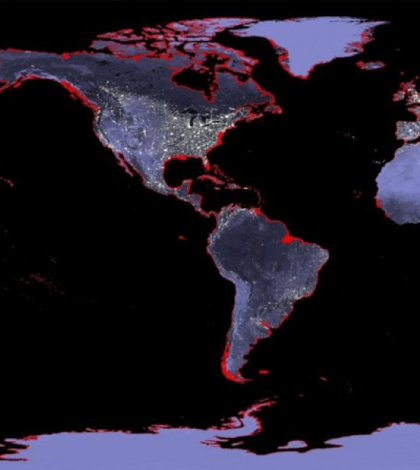Ice Sheets May Be More Resilient Than Once Thought

Project 6-meter sea level rise represented in red. (Credit: NASA)
Many have predicted that ice sheets are gradually going to melt as a result of global warming, but according to a recent Stanford’s School of Earth, Energy & Environmental Sciences press release, the effect of global warming may not be as bad as previously thought, if the isotopic structure of modern ice sheets is considered.
The Pliocene period of about 3 million years ago is sometimes used as a good ancient analogue to the global warming behavior of the Earth today, as roughly the same amount of carbon dioxide was present then as there is now. However, most scientists also assumed that the isotopic structure of the ice was the same then as it is now, leading to certain projections of water level rise.
But the new Stanford research suggests that the isotopic fingerprint of Pliocene ice may have been different, which means that modern projections of sea level rise would need to incorporate isotopic differences. It was generally found that sea level rise projections became significantly lower when isotopic differences were taken into account. The lower sea level rise projections are viewed as tentatively good news for the planet.
Top image: Project 6-meter sea level rise represented in red. (Credit: NASA)





0 comments